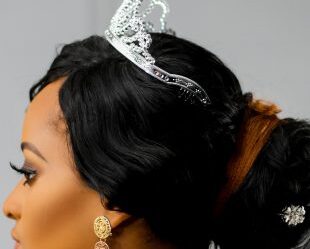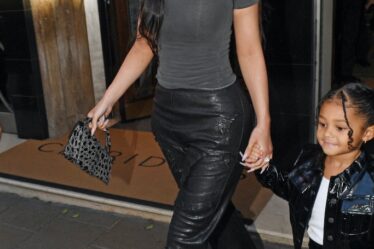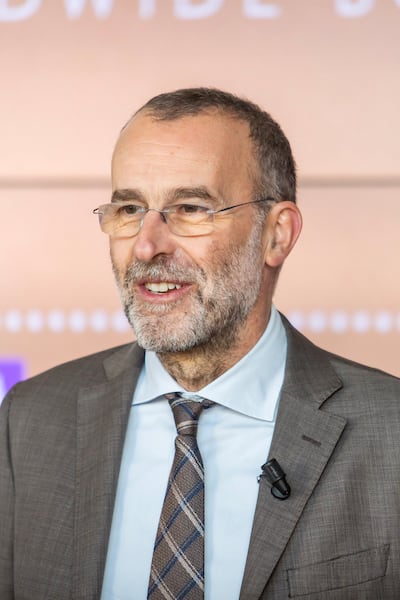
The agenda-setting B2B beauty and cosmetics event, Cosmoprof Worldwide, returned to Bologna this March for its 55th edition. Positioned as 3-shows-in-1, Cosmoprof Worldwide is split across 3 key segments: Cosmoprof Cosmo Perfumery & Cosmetics; Cosmo Hair, Nail & Beauty Salon; and Cosmopack, dedicated to the supply chain. The combined shows are designed to facilitate increased exposure and opportunities across the value chain.
Having welcomed 248,500 attendees from 150 countries and 3,012 exhibitors from 69 countries across the 3-day event, Cosmoprof Worldwide’s 55th edition once again cemented its position as the world’s largest professional beauty event.
“Thirty-five percent [of exhibitors] are new, and we registered more or less 4 percent new visitors compared to the past editions,” Enrico Zannini, director general of Cosmoprof Bologna, told BoF ahead of the event. Reflecting on the significant increase in visitors and exhibitors, Zannini added: “The market is growing and changing faster now than ever before.”
Indeed, McKinsey & Co. estimates that by 2027, the global beauty industry will record over $580 billion of retail sales, growing at 6 percent per year. Earnings in February confirmed the strength of the market — major players like E.l.f. Beauty expected full-year sales of nearly $1 billion, while Coty beat Wall Street estimates due to the power of its fragrances and new launches. L’Oréal Group also delivered its third year of double-digit growth.
Growing consumer interest in wellness within beauty is one area drawing focus and driving business — 82 percent of US consumers now consider wellness a top or important priority in their everyday lives, alongside 87 percent of consumers in China and 73 percent in the UK, according to McKinsey’s report on wellness trends in 2024.
A series of mainstage talks, CosmoTalks, included the event’s trend forecasting report called CosmoTrends (timely trend analysis) and Cosmovision (looking ahead 5 years), in partnership with global insights platform Beautystreams.
A panel also explored next-generation technologies like artificial intelligence (AI) and augmented reality (AR) across the value chain also featured, as “high tech and AI is set to transform the way that younger generations will approach beauty products in the future,” explained Zannini. “AI will also enable greater transparency in the supply chain, provide data and information about products, how they are processed, the sourcing for raw materials and all the steps in production, giving more information to the end-consumer.”
CosmoTalks also explored growing beauty markets in the US, China, India and Africa. To engage the global beauty industry, Cosmoprof hosts a wider network of shows in Las Vegas, Mumbai, Bangkok and Hong Kong. This year, it launched a new show in Miami, “reflecting the importance of the US market,” according to Zannini. Indeed, BoF and McKinsey & Co.’s ‘The State of Fashion: Beauty’ report in 2022 identified China and the US as the leading markets for beauty, expected to reach $96 billion in China and $114 billion in North America by 2027.
The Cosmoprof Awards 2024, celebrates the best in business across product innovation, materials, packaging and more, introduced new categories this year: mum and babycare products; suncare products; personal and home fragrance; and men’s grooming products and accessories. The awards are indicative of the innovative products and trends entering the market, selected by an independent panel of judges across a multidisciplinary jury with technical expertise.
Now, BoF shares key insights and learnings from the talks and trends driving change in the beauty industry today, as shared at Cosmoprof Worldwide 2024, featuring expertise from industry leaders at L’Oréal, Shiseido, Goop, Merck Group, Euromonitor and more.
Unlock Opportunities Within an Ageing Population and Consumer Cohort
“We have an ageing population,” said Emilie Hood, senior research analyst at Euromonitor International in a talk on ‘The Aging Well Movement’. “The global population is expected to grow 1 percent in the next 15-20 years; the population over 65 is expected to grow 4 percent, which is quite a big difference. This is particularly prominent in Asia Pacific. So, there is a really big opportunity there.”
During the Cosmovisions panel talk, reflecting on a five-year outlook for the industry, Beautystream’s creative director Michael Nolte shared how, globally, the median age in 2025 is 32 years old, but by 2100, that is expected to reach 42. This set the overarching theme for ‘Cosmovisions’ as: “Vitalism – Living Longer, Living Stronger.”
Elena Nunno, global strategic marketing manager for cosmetics at Merck Group, added that, “with the median age increasing, it’s important that society moves away from this narrow youth idea of beauty and to be more inclusive and recognise that every age has its own beauty.” She emphasised the role media has to play in supporting the public representation of beauty in recognising and including more ages.
Beautystream’s research predicts that the ageing population will have an impact across beauty’s segments — with more products geared towards a pro-ageing movement. For example, in hair care, we should expect to see more products like grey hair enhancers and an anti-hair loss focus, while colour cosmetics will feature skin-care benefits and focus on comfort. Skincare and epidermal care will have a hormone focus and age-specific supplements, while packaging will become more disability friendly and feature more graphic colour-coding and smart dosage dispensers.
Most products today are created with the age group of 20 to 25 in mind, not for 40 to 50. None of the products here will be ready for this age group.
However, as Akshay Talati, Goop’s vice president of product development, research and innovation, shared on stage, the industry needs to have a mind-set shift to product formulations and marketing. “Most products today are created with the age group of 20 to 25 in mind, not for 40 to 50. None of the products here will be ready for this age group. There will be a shift over time, and people will start creating products for that age group.”
“That age group will want to feel young so [the products] will have to be sensorially and emotionally appealing to them – not necessarily through bright colours, but a psychological shift. In advertising also right now, even in shows, you will not [typically] see a woman or man in the group of 50 in their advertisements. [That] has to change.”
Outside of a moral imperative to serve a greater diversity of consumers, there is also a business imperative, with a growing spending power within the older generations. Otilia Beschea, director of innovation at Canadian cosmetics manufacturer Groupe Marcelle, added that, in North America, “Generation X and Baby Boomers do not feel represented yet women [over] 50 have the [combined] buying power of $50 trillion,” suggesting an underserved market teeming with opportunity.
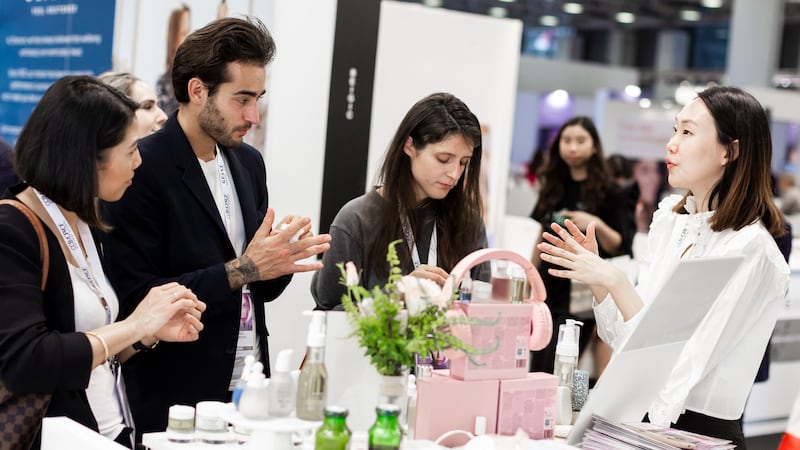
Explore Physical and Psychological Wellness Benefits to Beauty Products
Growing consumer interest in wellness is driving beauty businesses to embrace wellness factors within their products — 82 percent of US consumers now consider wellness a top or important priority in their everyday lives, alongside 87 percent of consumers in China and 73 percent in the UK, according to McKinsey’s report on wellness trends in 2024.
Talati shared the Goop philosophy that “beauty is wellness and wellness is beauty” and how they are seeing more beauty companies moving into this symbiotic space: Estée Lauder Companies’ has partnered with Stanford Institute of Longevity on a new product innovation powered by age reversal technology; L’Oréal is working on regenerative medicine through biomaterials research with Symatese; Skinmedica is exploring conditioned media, which refers to cultured stem cells assisting in skin renewal and rejuvenation, healing and anti-aging.
“Over the last 10, 20 years, chemistry was driving biology. But the next generation will be biology driving chemistry, because biology is so precise,” he added.
“I think the line between health and wellness and beauty is blurring,” added Robin Raskin, founder of Virtual Events Group who joined ‘The Most Important Tech Trends in Beauty Today’ panel. She explained that wellness developments will not only feature within products but in technological advancements.
You are going to be more immersed than ever with technology giving you highly personalised information.
“That same camera I may use to see how my pores [look] may detect an early cancer or a mole that needs taking care of. That same ring that I used to find out if I [reached] my steps [goal] is going to tell me what the pollution is, [or] if I put on enough sunblock. You are going to be more immersed than ever with technology giving you highly personalised information.”
This cross-over between wellness and beauty is seeing a new generation of wellness-oriented beauty brands, according to Rachel Weiss, an early stage VC investor at L’Oréal USA. She added that “these digital codes are really defining the next generation of brands, [focused on] how medically effective skin care and hair care [is], and what the consumer expects.”
For example, the industry is seeing a rise in neurocosmetics — a market expected to surpass $2.69 billion by 2030, growing at a CAGR of 8.4 percent between 2023 and 2030, according to Skyquest data in the CosmoTrends 2024 report. Neurocosmetics engage the epidermis and enable a reaction from the nervous system, enabling a sensorial reaction upon application.
However, Talati adds that all products need “some type of instant gratification” with consumers looking at themselves more through social media or virtual meeting rooms — like a tinted moisturiser with instant effect — so you are “screen ready.”
This gratification should start with packaging, enabling an “emotional and psychological connection through […] easy to understand packaging, clear language and then the sensorial connection of aroma. […] People will now connect scents like lavender, camomile, orange and [other] natural scents to give that mind-body connection.”
Leverage Next-Generation Technologies to Accelerate Speed to Market
The panel on the ‘Most Important Tech Trends in Beauty Today’ discussed how significant the impact technologies like AI and AR can have on product development and marketing. Raskin explained how, “when you’re looking at [implementing] AI in your journeys, you’re looking at everything from product ideation to packaging to sourcing responsible sustainable materials.”
Dr. Raffaella Gregoris, founder of clean skincare brand Bakel, explained how, with the development of their innovative and disruptive product Jalu-3D — a 3D-printed treatment — AI helped the brand craft simple explanations about the product to educate the end-consumer, as well as gather insights on what consumers said about their first impression. “When we launched [a product] that didn’t exist [yet], AI helped us to transfer the message and step-by-step, explain what we did.”
There’s so much from a product marketing standpoint — you can do really straightforward things like product education, gamification or full immersion in virtual environments.
Goop’s Talati shared in the Cosmovisions talk how he has experimented with AI to see how it could assist with research. “When you are doing molecular research and you have to screen thousands of molecules to come up with that one molecule that will target a certain function, AI is the fastest. It screens at an amazing speed.”
“It can predict stability testing; […] it can predict safety testing based on past patterns; it can predict the formula for sunscreen; it can predict what its sunscreen value will be. I have also played around with AI on formulation. In ChatGPT, you can [ask for] a shampoo formula with ingredients from China, Japan, and you will get a 15-ingredient formula,” he added.
Outside of the practical applications of AR and AI, Dina Fierro, senior vice president of web3 and the metaverse at Shiseido, highlighted the benefits brands can draw from its creative applications to “enrich the consumer experience, to further brand storytelling and to encourage, for example, UGC.”
Citing lenses on Snapchat or filters on Instagram or TikTok, she added: “There’s so much from a product marketing standpoint — you can do really straightforward things like product education, […] gamification or full immersion in virtual environments, there’s a lot to unlock there.”
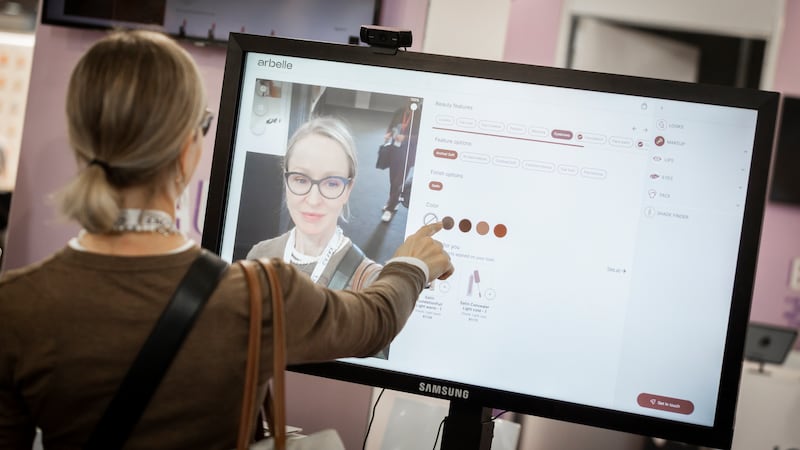
Meet Gen-Z and Gen Alpha Consumers in Social and Virtual Spaces
“Self-expression and creativity are not restricted to the real world, particularly when we look at younger generations,” said Fierro. “Gen Alpha, Gen-Z, who are super engaged in these [virtual] spaces, see literally zero distinction between how they express themselves in the real world and how they express themselves virtually.”
Instead, the distinction to consider is these consumer cohorts’ engagement data with brands across legacy platforms like social media versus newer virtual spaces.
“In 2024, we are very lucky to get 3 or 6 seconds of someone’s attention on a platform like Instagram or TikTok,” said Fierro. “Meanwhile, when we look at our engagement data on Roblox, on average, we saw 13 minutes of engagement per session on our last experience [on the] platform in 2023. So, compare 3 seconds to 13 minutes, it’s easy to see what the ROI is on that potential.”
Having previously worked at Shiseido-owned Nars, Fierro shared how Nars Colour Quest launched on Roblox as one of the first branded beauty experiences on the platform. Taking inspiration from the franchise and the history of the brand, Nars leveraged their core franchises in the virtual setting and integrated founder François Nars as a non-player character, or NPC, to further engagement. The brand also had a metaverse make-up editor — the first of its kind — so that participants could create bespoke make-up looks for their avatars, leaning into the brand’s identity that is focused on creativity and self-expression.
Gen Alpha, Gen-Z, who are super engaged in these [virtual] spaces, see zero distinction between how they express themselves in the real world and how they express themselves virtually.
L’Oréal’s Weiss notes how this next generation of consumers will also change the creator economy and its impact on the beauty industry. “Over half of Gen Alpha and Gen-Z want to be creators and think it’s a viable economic job. […] Beauty built some of the biggest platforms like YouTube into these giant companies. I’m interested in how the marriage of tech will impact the creator economy and that will feed into the algorithm.”
Fierro added that platforms like Roblox and Fortnite are building up robust, user generated creator economies, citing that Roblox paid out between $700 million and $800 million to creators on platform — one creator Shisiedo has worked with sold $10 million of virtual goods alone as an individual creator.
“Right now, the economics of a lot of those platforms are not particularly favourable to brands or to creators, but that’s definitely going to be changing in the coming months and years as those spaces continue to age up and mature,” she added.
Brands and the wider industry must consider amid their technological experimentation how a need for more computing power will impact the environment. “It’s going to get a lot of questions about sustainability and climate change because there is a cost for all of the computing power and what that means for a virtual world,” added Raskin.
Prioritise Personalisation in Products and Services
Panellists across talks emphasised the importance of personalisation across the value chain — whether through marketing activations to reach specific demographics and markets or through the product ingredients and beauty services for each stage of life.
The CosmoTrends Report 2024 dedicated a section to personalisation entitled: “Only You”, citing research from Bolt that 80 percent of Gen-Z and 62 percent of shoppers overall are more inclined to purchase a beauty product if they can find their perfect formula using technology.
Merck Group’s Nunno added how “personalisation will be the new norm, driven by AI or any advancements in technology and scientific research.” This will offer formulators “new ingredients that will be tailor-made for almost every moment of life.”
Not only will products be increasingly personalised to every stage of life but also across different environments and climates. Raskin added: “The key word for me is ‘personalisation’ — […] everything that you are seeing in high tech is allowing you to have the right combination of materials — just for your skin, just for your climate, just for your pollution environment.”
Goop’s Talati added that, eventually, personalisation will be available on a truly individual level. “We’re not there yet, but […] conditioned media, gene therapy, DNA-based diagnostics… I already saw tests out there where you can diagnose your own chronological age versus epigenetic age.”
“So, there will be products created towards the epigenetic age, like the influence of pollution, sun damage. […] The biggest challenge right now is that I [would] need my own DNA test. I know what’s wrong with my skin, I know what I need to do, but there are no molecules out there which can be personalised for me — yet.”
This is a sponsored feature paid for by Cosmoprof as part of a BoF partnership.

